Computer Engineering
Physicsworld
141

Image Credit: Physicsworld
Protons take to the road
- Physicists at CERN have conducted a test run for transporting antimatter out of the lab, aiming to study antimatter in different settings to understand matter-antimatter differences.
- According to the Standard Model, the universe should have equal amounts of antimatter and matter, leading to the mystery of why there is more matter today.
- The Baryon-Antibaryon Symmetry Experiment at CERN focuses on measuring the magnetic moment of protons and antiprotons to explore matter-antimatter asymmetry.
- To enable more precise measurements, a transportable device named BASE-STEP has been developed to carry antiprotons to better-shielded labs.
- The BASE-STEP device, tested successfully with protons, aims to transport antiprotons for further experiments with enhanced precision.
- The device, mounted on an aluminum frame, uses a Penning trap and superconducting magnet to trap and shield protons from collisions during transport.
- The transport system is designed to withstand accelerations and slopes, enabling the safe movement of particles for experiments at other research facilities.
- The team plans to transport the device to a new Penning-trap system in Germany to continue studying matter-antimatter symmetry at higher precision levels.
- This advancement in transporting antimatter for experiments may provide insights into fundamental physics principles beyond the Standard Model.
- The research at CERN's BASE aims to conduct the most precise matter-antimatter symmetry tests in the baryon sector by transporting particles for improved experiments.
Read Full Article
8 Likes
Interactions
0

Chile to become an Associate Member State of CERN
- Chile has signed an agreement to become an Associate Member State of CERN.
- Chile's involvement with CERN began in 1991 and has strengthened over the years, leading to the Associate Membership application in 2023.
- The agreement allows Chilean scientists to participate in various CERN experiments and collaborations, with support from ANID.
- As an Associate Member State, Chile will have representation in CERN committees, and its nationals can apply for staff positions and graduate programs at CERN.
Read Full Article
Like
Popsci
379

Image Credit: Popsci
How to avoid crying while cutting onions, according to physics
- Suggestions to avoid onion-induced tears in the kitchen range from freezing them to using special goggles, but physicists at Cornell University suggest using a sharp knife and a slow cutting speed.
- Onions have been a staple since ancient times and are valued for their health benefits, nutritional content, and antibacterial properties.
- A specific onion compound called syn-propanethial-S-oxide is responsible for causing tears due to its release when onions are cut.
- Research by Cornell physicists found that sharper blades and slower cutting speeds result in fewer droplets and particles being released, reducing the likelihood of tears while cutting onions.
Read Full Article
22 Likes
Nytimes
196

Image Credit: Nytimes
Nine Federally Funded Scientific Breakthroughs That Changed Everything
- Since World War II, the United States has heavily invested in science with $200 billion annual spending on research and development.
- Basic science, often aimed at understanding fundamental concepts, is regarded as the pacemaker of technological progress.
- Government investments have led to significant breakthroughs like the development and proliferation of GPS technology.
- One example is the first commercial GPS unit made in 1988, paving the way for its extensive use in various devices today.
Read Full Article
11 Likes
Discover more
- Programming News
- Software News
- Web Design
- Devops News
- Open Source News
- Databases
- Cloud News
- Product Management News
- Operating Systems News
- Agile Methodology News
- Startup News
- Cryptocurrency News
- Technology News
- Blockchain News
- Data Science News
- AR News
- Apple News
- Cyber Security News
- Leadership News
- Gaming News
- Automobiles News
Hobbieroth
64
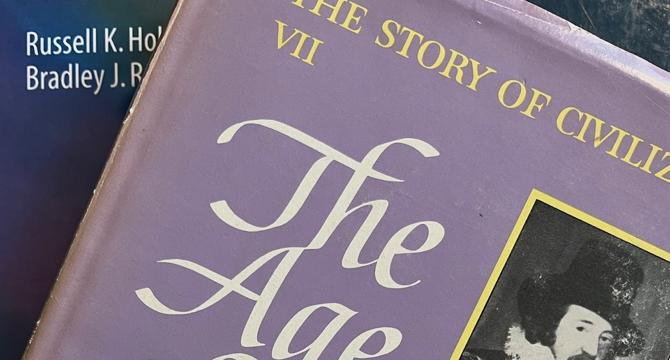
Image Credit: Hobbieroth
The Age of Reason Begins
- The Age of Reason Begins is a book that focuses on European Civilization during Shakespeare, Bacon, Montaigne, Rembrandt, Galileo, and Descartes.
- Francis Bacon, a central figure in the book, was born in the aura of the court and promoted the scientific method.
- Bacon emphasized practical observation over theoretical thought and advocated for inductive study of nature.
- The current attacks on science include budget cuts, climate change denial, and conspiracy theories.
- Key feature essential to science preservation emphasized, focusing on the belief that evidence matters most.
- The supremacy of evidence is crucial in determining truth and distinguishing science from belief or personal biases.
- Bacon's spirit advocated for seeking truth through facts and rational explanations rather than tradition or superstition.
- Resistance against the Republican War on Science is urged, emphasizing the importance of evidence and experimentation.
- Bacon's influence continues to inspire scientists with his passion for extending knowledge and seeking truth.
- The Philosophy of Sir Francis Bacon repudiates reliance on traditions and popular mythology, advocating for rational explanations.
Read Full Article
3 Likes
COSMOS
301
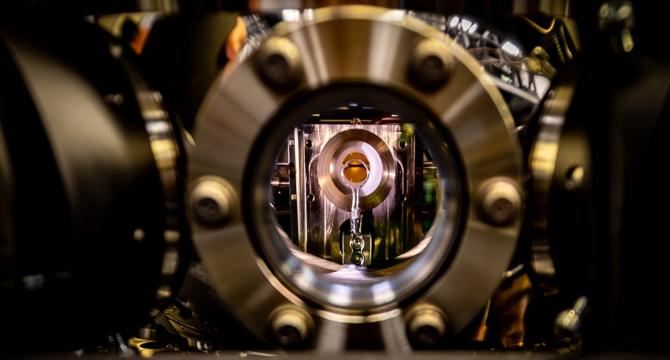
Image Credit: COSMOS
First quantum simulation of chemical dynamics puts science on the edge
- Researchers have achieved the first quantum simulation of dynamic chemical processes using a quantum computer, a milestone beyond the capabilities of classical supercomputers.
- The study, published in the Journal of the American Chemical Society, demonstrated the real-time simulation of chemical processes on a quantum device.
- The quantum simulation involved molecules interacting with photons, revealing the dynamics of chemical bonds transitioning to higher energy states.
- The nano institute's quantum computer at the University of Sydney simulated the interaction of photons with molecules like allene, butatriene, and pyrazine.
- The simulation allowed researchers to observe the process occurring in milliseconds, significantly slower than its actual timeframe of femtoseconds.
- This breakthrough enables a deeper understanding of how light drives chemistry in processes crucial to life, renewable energy, and medicine.
- The quantum simulator's efficient analogue approach using a single trapped ion demonstrates its potential power in studying complex chemical dynamics.
- The researchers believe that with a slight scaling up to 20-30 ions, quantum simulations could explore chemical systems beyond classical computing capabilities.
- This development marks progress towards achieving 'quantum supremacy' in simulating chemical dynamics that classical computers cannot handle.
- The quantum simulator's ability to accurately mimic real-time chemical dynamics using existing hardware opens doors for advancements in materials science and drug discovery.
Read Full Article
18 Likes
Brighter Side of News
274
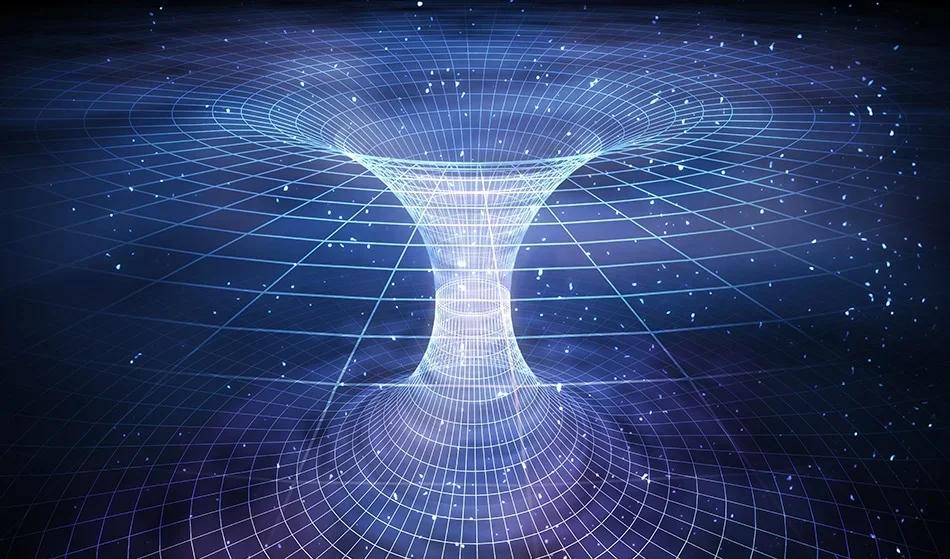
Image Credit: Brighter Side of News
Subatomic wormholes could be responsible for universal expansion
- Scientists have discovered that the universe's expansion is speeding up, a phenomenon unexplained by general relativity.
- Dark energy, a mysterious force, makes up about 68% of the universe's total energy, surpassing all other known components.
- The nature of dark energy, including its origin and behavior, remains highly debated and poorly understood.
- Microscopic wormholes have been proposed as a potential driver of the universe's accelerated expansion.
- Quantum field theory predicts a significant discrepancy in the value of the cosmological constant, posing a fundamental challenge.
- Research is exploring alternative explanations for dark energy, such as dynamic forces and holographic dark energy.
- A new theory suggests subatomic-size wormholes created and destroyed in the vacuum of space may be responsible for universal expansion.
- Experimental verification of the wormholes driving dark energy theory remains a challenge but could provide significant insights into quantum gravity.
- The research team is refining calculations to determine the rate of wormhole formation and hopes to publish results soon.
- Understanding dark energy and potential confirmation of wormholes as drivers of cosmic expansion could revolutionize our understanding of the universe.
Read Full Article
16 Likes
Fyfluiddynamics
164
Image Credit: Fyfluiddynamics
Mapping the Mozambique Channel
- The Mozambique Channel is home to turbulent waters driven by mesoscale eddies that impact local biodiversity, sediment mixing, and plastic pollution movement.
- Scientists measured a mesoscale dipole in the region, which consisted of a large counterclockwise anticyclonic ring and a smaller clockwise cyclonic eddy.
- The anticyclonic ring had uniform waters with low chlorophyll, while the cyclonic eddy had high chlorophyll levels and varying salinity, driving vertical motions up to 40 meters per day.
- In situ measurements like these aid in understanding energy flows in the ocean, guiding predictions related to nutrient transport, sediment movement, and the impact of climate patterns on the region.
Read Full Article
9 Likes
Medium
22

Image Credit: Medium
Stop Struggling with Percentages
- Math can be challenging for many, especially when dealing with percentages.
- One useful trick is to flip the order when calculating percentages, making it simpler and quicker to find the answer.
- Breaking down percentages into 10% and 50% parts can also make calculations easier and more manageable.
- Understanding these strategies can help simplify percentage calculations and make them feel less daunting.
Read Full Article
1 Like
Physicsworld
324
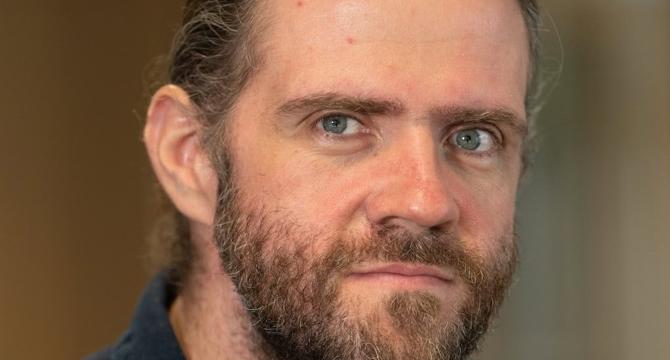
Image Credit: Physicsworld
Quantum computing for artists, musicians and game designers
- Creative industries are early adopters of quantum computing, utilizing cutting-edge digital technologies.
- Moth Quantum is a company developing quantum-software tools for artists, musicians, and game developers.
- James Wootton, the chief scientific officer at Moth Quantum, has a background in quantum error correction at IBM.
- This article is part of Physics World's contribution to the 2025 International Year of Quantum Science and Technology.
Read Full Article
19 Likes
Physicsworld
324

Image Credit: Physicsworld
Five-body recombination could cause significant loss from atom traps
- Five-body recombination, particularly at specific 'Efimov resonances', could lead to significant loss from ultracold atom traps, as suggested by calculations from US physicists.
- These recombination processes, less understood compared to three- and four-body recombination, have implications for molecule construction and nuclear fusion modeling.
- When atoms collide in traps, interactions can be either elastic or inelastic, where kinetic and internal energy states are exchanged.
- In ultralow-temperature quantum gas studies like Bose-Einstein condensates, three-body collisions caused atom leakage from the condensate.
- Vitaly Efimov's work in the 1970s on resonances allowed for the formation of bound states at specific scattering length resonances.
- At these resonances, five-body recombination can occur, with four atoms forming a tetramer and a free particle, identified as a principal loss channel in the recent study.
- Researchers aim to observe these resonances experimentally using modern laser box traps to manipulate atomic gases.
- Understanding five-body recombination can aid in molecule creation and potentially in modeling fusion reactions, like deuterium/tritium fusion.
- There are challenges in analyzing larger bound states beyond five, as the scattering length dynamics change with additional particles.
- Greene and Higgins' work has drawn acclaim for extending few-body theory to five-particle collisions, with implications for advancing theoretical approaches in this field.
- The study is featured in Proceedings of the National Academy of Sciences, sparking interest in the scientific community for its implications on ultracold physics.
Read Full Article
19 Likes
Medium
146

Image Credit: Medium
An Invitation to Those Who Seek the Deeper Pattern
- The United Theory of Everything (UToE) proposes that consciousness is not merely a byproduct of the brain but a pervasive field that connects all things.
- The UToE offers a 12-phase simulation to explore this concept, showcasing the interconnectedness of mind, matter, and reality.
- The simulation delves into the birth of symbolic agents, coherence patterns, consciousness dynamics, meaning repair, and unity emergence.
- Individuals are invited to engage with the simulation, regardless of scientific background, to uncover the hidden intelligence and language of life within it.
Read Full Article
8 Likes
Medium
146
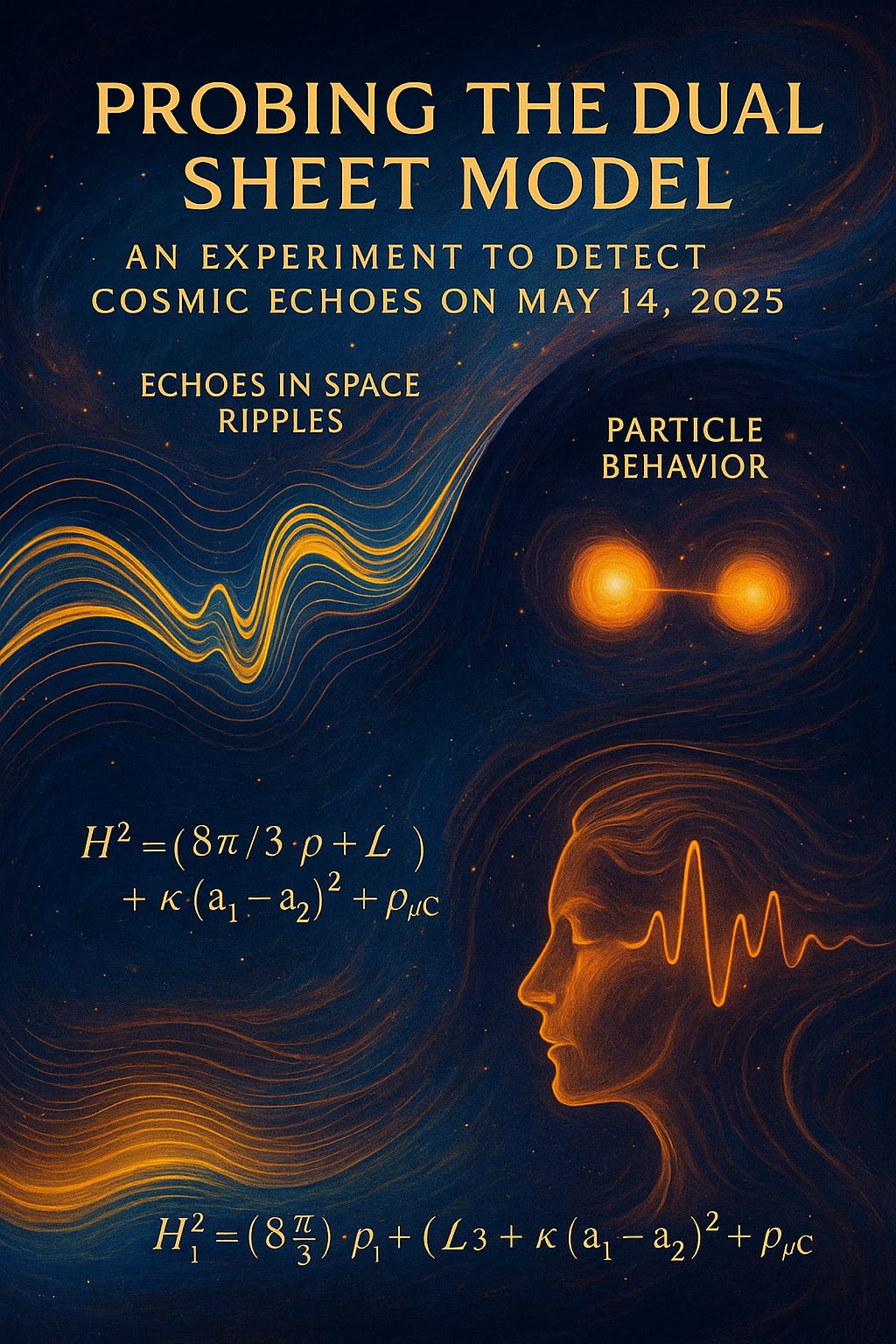
Image Credit: Medium
Listening for the Future: How a Black Hole Collision on May 14, 2025, Could Reveal a Hidden…
- On May 14, 2025, at 08:55:30 PM EDT, a cosmic spectacle unfolded as two black holes collided, revealing invisible ripples captured by detectors like LIGO and Virgo.
- The collision event, named GW250514, provided an opportunity to investigate the Dual Sheet Model (DSM), suggesting a hidden twin universe where time may run backward.
- Scientists are designing an experiment post the event to explore echoes from the future, peculiar particle behavior, and potential brain-related effects, seeking volunteers for participation.
- This discovery could revolutionize our understanding of the cosmos and fundamentally alter our perception of time and the universe.
Read Full Article
8 Likes
Knowridge
13
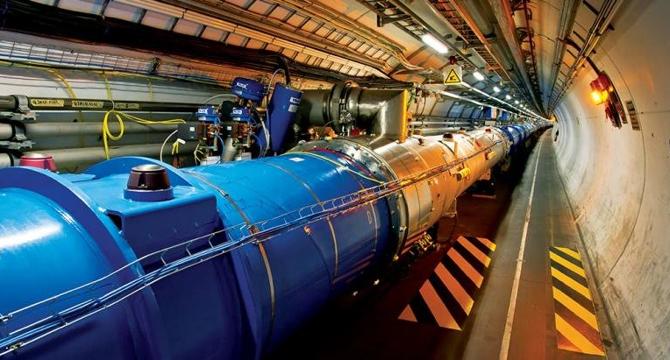
Image Credit: Knowridge
Physicists at the Large Hadron Collider turned lead into gold—by accident
- Physicists at the Large Hadron Collider in Switzerland accidentally turned lead into gold while smashing lead atoms into each other.
- To transform lead into gold, the scientists fired beams of lead nuclei at each other at near-light speeds to create a powerful electric field that pulls out protons.
- The lead nuclei, when narrowly missing each other, release protons due to the huge electric field, converting some lead atoms into gold atoms.
- The production of gold at the collider is seen as a nuisance as the transformed nuclei collide with the walls, leading to a decrease in beam intensity over time.
Read Full Article
Like
Physicsworld
41
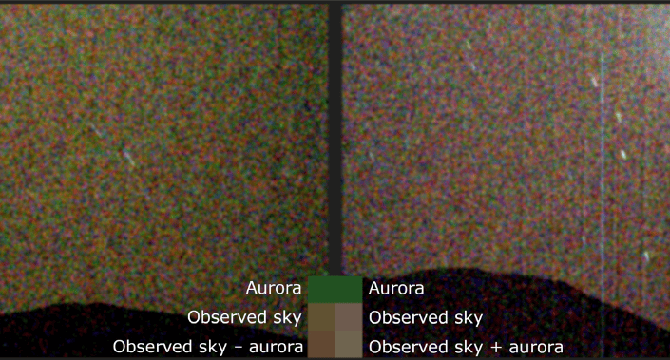
Image Credit: Physicsworld
This is what an aurora looks like on Mars
- The Mars rover Perseverance has captured the first image of an aurora on the surface of another planet, which appeared greenish during a solar storm on 18 March 2024.
- Aurorae on Mars are generated when charged particles from the Sun interact with the planet's magnetic field, despite Mars having a weaker magnetic field due to the loss of its internal magnetic dynamo.
- Scientists had previously identified different types of aurorae on Mars through data from orbiting spacecraft at ultraviolet wavelengths.
- Observations of Martian aurorae were challenging due to the lack of visible-wavelength instruments on rovers, the focus on geological missions, and the fleeting nature of aurorae.
- Improvements in aurora forecasting helped researchers time their observations on Perseverance to capture the aurora, which appeared as a diffuse green haze in all directions.
- The discovery allows for the study of Martian aurorae variations over time and space, providing insights into particle transport and magnetosphere dynamics.
- The researchers emphasize the potential for visible-light instruments to simplify and reduce the cost of future aurora observations on Mars.
- Studying Martian aurorae can offer valuable information on the interaction between solar particles, Mars's magnetosphere, and upper atmosphere.
- The findings, published in Science Advances, lay the foundation for further research on Mars's aurorae and their implications in understanding planetary magnetospheres.
- This groundbreaking observation presents new opportunities to explore auroral phenomena beyond Earth and advance our understanding of planetary magnetospheres.
Read Full Article
2 Likes
For uninterrupted reading, download the app